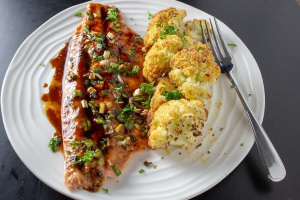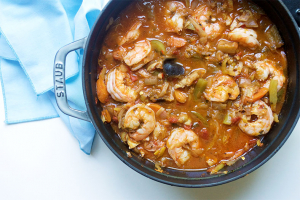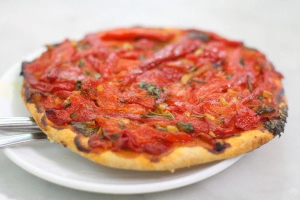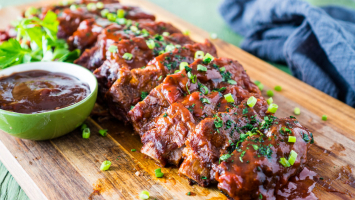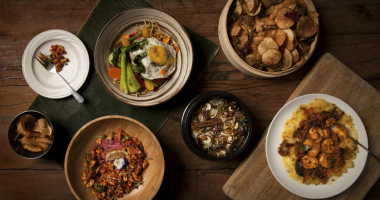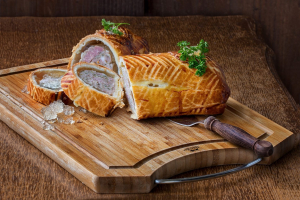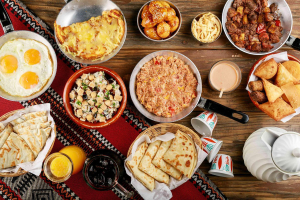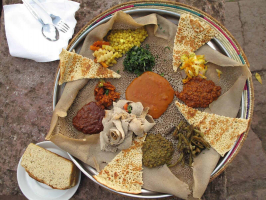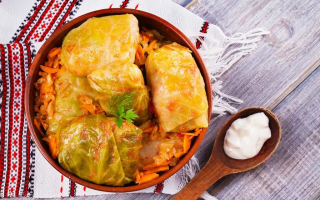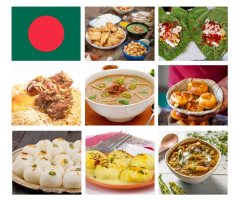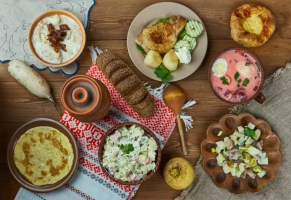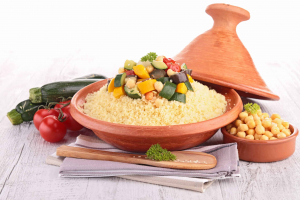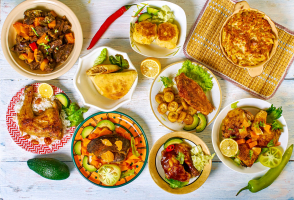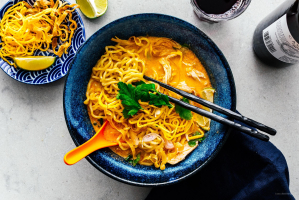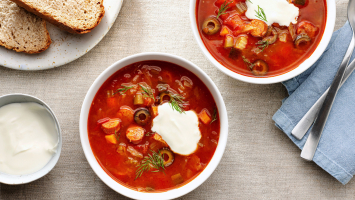Top 10 Best Foods In Seychelles With Recipe
The Seychelles islands are well-known for a variety of reasons. Beaches are at the top of most people's lists, with their turquoise warm waters, dazzling white ... read more...sands, palm trees, and, well, you get the idea. Another thing that most tourists to these islands fall in love with is the cuisine of the Seychelles. There's a valid explanation behind this. There is something for every taste bud and palette, from freshly caught fish to locally grown fruit, fiery curries to sweet fried bananas. Here is a list of the best foods in Seychelles with recipe that you shouldn't miss.
-
In the Seychelles' official language, Creole, the name for papaya is pau-pau. As a tropical island, there is never a shortage of papayas; their tangy orange color is noticeable in every lush nook and is an essential part of every garden, alongside coconut trees. Chutneys of all kinds are at the heart of Seychelles history, which dates back to the slaves brought ashore from Africa years ago. They would consume whatever nature provided.
Chutneys are just grated vegetables that have been stir-fried with spices. Thus, a stir-fry of any tropical vegetable or raw fruit, such as golden apple, long gourd, eggplant, and my personal favorite, papaya. Authentic marinated grilled fish, rice, piment (crushed peppers), and pau-pau chutney are traditional Seychellois dishes. And, of course, some fresh passion fruit juice to go with it. Pau-pau chutney, adorned with beautiful red tomato peels and frangipani blossoms, would undoubtedly appear on any Creole buffet. It is a simple, healthy, and delicious cuisine that should not be overlooked!
Ingredients
- 2 medium size green pawpaw, 1 large onion small and sliced, 2 lemons juiced, 2 tbsp vegetable oil, 2 fresh chillies crushed -optional, 500 ml warm water, 1 tbsp salt, 1 tsp cracked black pepper, salt and pepper to taste
Instructions
- Peel the green pawpaw under running water. A potato peeler is ideal. Please note that the latex from the pawpaw can cause itchy skin. If you have delicate skin, please use a pair of gloves.
- Cut peeled pawpaw length-wise into four equal wedges and remove all seeds.
- Finely grate the peeled pawpaw.
- Salt the water and soak the grated pawpaw.
- Macerate the pawpaw in the water for about five minutes and let rest
- Remove the pawpaw from the water and place a handful at a time in a muslin cloth. Wring hard to remove as much moisture from the pawpaw as possible. This is important as if there is too much moisture left in the pawpaw the resulting chutney will be gooey!! You want your chutney to be fluffy.
- Fluff up the grated pawpaw and mix in the chopped onion and half of the lemon juice and season with some salt and pepper.
- Heat oil in a wok and toss the pawpaw for about 5 minutes. Add remaining lemon juice and chilli. Do not add chilli too early as fried chilli can create breathing problems.
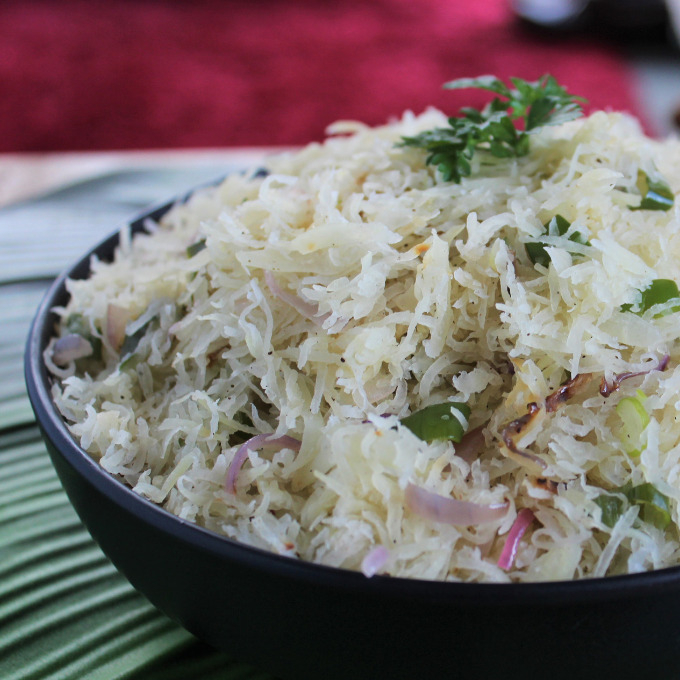
thecreolemeltingpot.com 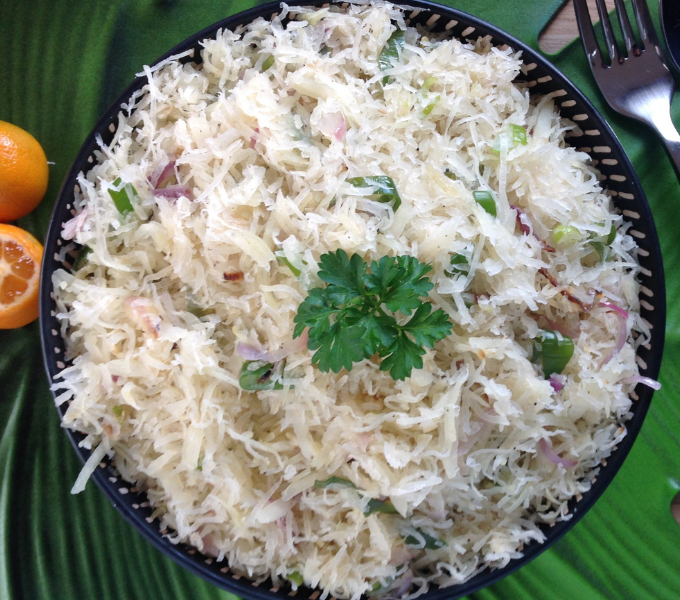
thecreolemeltingpot.com -
Sharks are abundant in the seas surrounding the Seychelles islands, and they have been a source of protein for the Seychellois since their early settlement. Most adult sharks are salted, but because the flesh is soft and juicy, infant and young sharks are curried or cooked in a chutney. It is worth noting, however, that shark meat is considered poor in value in Seychelles and is usually consumed during times of fish scarcity, i.e. during the south east monsoon (June – September). Shark meat is rarely utilized in steaks or fish and chips, as it is in Europe and Australia.
Except for a few sharks, the Seychellois cooks the majority of them since they have an unpleasant flavor and smell. Except for whale, nurse, and sand sharks, and a shark known locally as rekin pisar, which has a strong ammonia odor, all of the sharks listed above are eaten in the Seychelles. The most popular sharks are the Hammerhead, Spottail Shark, Sliteye Shark, and Violin Shark.
Ingredients
- 1 kg shark meat, preferably baby shark, 15 bilimbi, washed and sliced into thin roundels, 1 onion , sliced, Juice of 1 lemon, 2 chillies, crushed, 1½ tsp turmeric, 3 tbsp vegetable oil, Salt and pepper
Instructions
- Wash the shark meat, cut into chunks and place it in a medium size pot and boil it for 10 minutes.
- When the shark meat is cooked remove it from cooking liquor and let it cool. Do not wash the shark meat in cold water as this will wash away the flavour.
- You need a chutney which is not mushy and to achieve this, you are required to remove as much moisture possible from the meat. When the meat is sufficiently cooled, remove any cartilage and skin. Place a handful at a time in a muslin cloth ( or any clean cloth) and wring out as much moisture as possible.
- Transfer the meat in a bowl, flake and fluff it up. The flaking, although part for the recipe, also helps to dissipate any residue of urea that may still be in the meat.
- Wash the bilimbi and slice them into thin roundels. You may decide to grate your bilimbi if you wish. Add a pinch of salt and gently squeeze out as much of the moisture as possible. If you do not squeeze the excess moisture, you will end up with a mushy chutney.
- Thoroughly mix the bilimbi into the shark meat and keep.
- Heat oil in a medium size pan. A wide pan is preferable as this will help to further dissipate the moisture from the chutney. Sweat the onion and stir for a minute or so until fragrant.
- Quickly stir in the turmeric, stir for a few seconds and add the shark meat. Avoid cooking the turmeric for too long as it will turn bitter.
- Cook the chutney for about 8minutes, stirring constantly to stop it from sticking. If you feel that there is a need for more oil because the chutney is sticking to the bottom of the pan, please add some more. The shark meat may at times be dry and can become very absorbent.
- Add the lemon juice and crushed chillies, and season as required.
- This chutney is traditionally served with boiled cassava. However, it also goes very well with boiled rice.
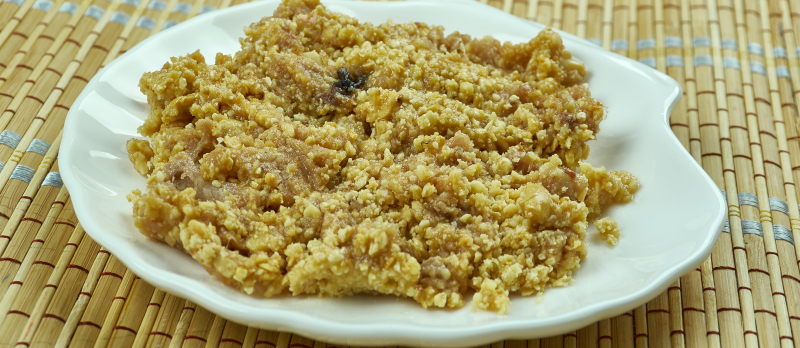
thecreolemeltingpot.com 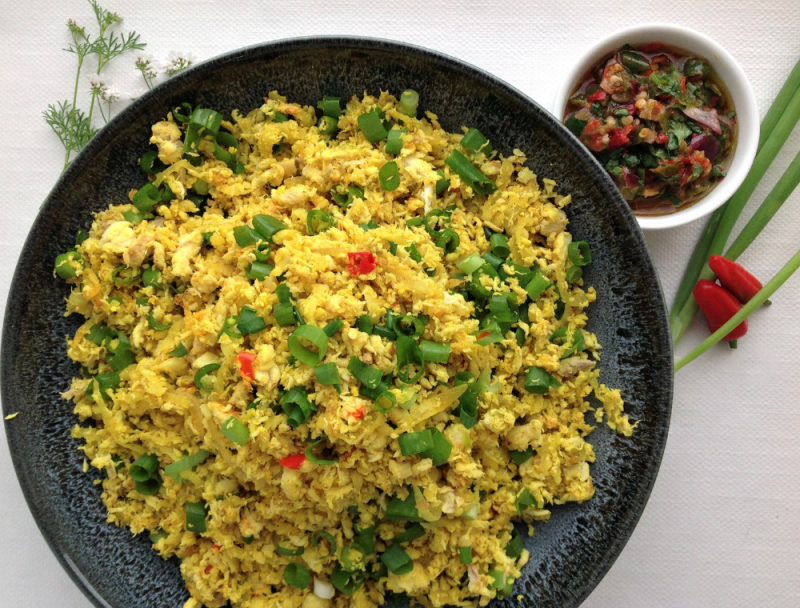
dreamstime.com -
Another must-try meal in Seychelles is the ever-popular Coconut curry, which is typically served with rice. This creamy curry is made by frying onions, ginger, garlic, and a variety of masala spices until the kitchen fills with the wonderful aroma of the dish. To finish this traditional Creole recipe, freshly produced coconut cream is combined with curry leaves and a touch of saffron. The curry is mildly hot, and the blend of spices used to prepare it distinguishes it from other curries.
Traditionally, a curry is any saucy dish seasoned with spices and containing meat, tofu, or vegetables. But “spices” doesn’t necessarily translate to “spicy”; it often just means flavorful. This recipe has some spice–garlic, ginger, curry powder–but that spice gets pretty toned down by the tomato paste and coconut milk. If you want your sauce to have a little more kick, feel free to add a little chili powder or cayenne.
Ingredients
- 1 tbsp vegetable oil, 1 tbsp. butter, 1 medium red onion, chopped, 2 large shallots, minced, Kosher salt, 2 cloves garlic, minced. 1 tsp, freshly grated ginger, 1 1/2 tbsp. curry powder, 2 tbsp. tomato paste, 1 (13-oz.) can coconut milk, 1/2 c. water, 1 1/2 lb. boneless, skinless chicken breast, cut into 1" pieces, Juice of ½ lime, Lime wedges, for serving, Mint leaves, torn, for serving, Cilantro leaves, torn, for serving, Cooked rice, for serving
Instructions
- In a large pot or high-sided skillet over medium heat, heat oil and butter. When butter is melted, add onion and shallots and cook until tender and translucent, 6 to 8 minutes.
- Add garlic, ginger, and curry powder and cook until fragrant, 1 minute more. Add tomato paste and cook until darkened slightly, 1 to 2 minutes more.
- Add coconut milk and water and bring to a simmer. Add chicken and cook, stirring occasionally, until chicken is cooked through, 6 to 8 minutes.
- Stir in lime juice and garnish with mint and cilantro. Serve hot with rice.
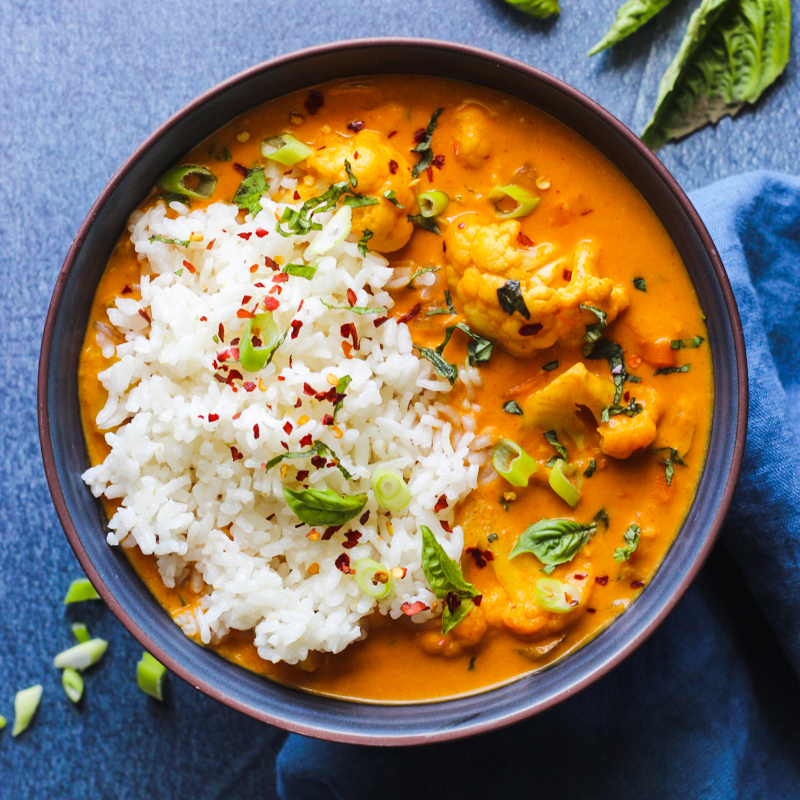
hellofresh.com 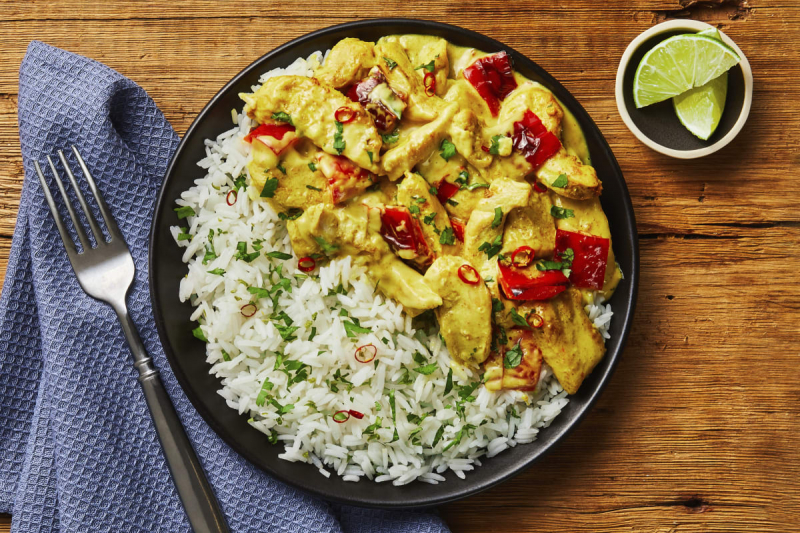
carlsbadcravings.com -
Cassava ranks 4th in the list of the best foods in Seychelles with recipe. Cassava is a starchy root vegetable that is grown and eaten all over the world. Cassava, which is high in vitamins and minerals, can be utilized in both savory and sweet recipes. On his blog Spoonabilities, recipe developer Carlos Leo specializes in producing culturally diverse meals, and he presents his version of a famous Filipino delicacy, cassava cake.
""I'm from the Dominican Republic," Leo explained, "and they make a cassava dessert." It's not the same or comparable. This was my first time sampling this cake, and it was delicious and to my liking." Cassava has a nutty, slightly sweet flavor and can be used in practically any cooking method, including broiling, baking, and frying, according to The Spruce Eats. Leo's cassava cake recipe has a nice soft texture and a sweet custard topping. It's ideal for dessert or nibbling at any time of day.
If you can't find fresh cassava, Leo recommends using frozen grated cassava, which you should defrost and wring off the extra liquid before using. Other ingredients are quite conventional for cake making, and the three types of canned milk contribute to the cake's exquisite texture as well as the delectable custard topping.
Ingredients
- 2 cups grated, peeled yuca, 1 (14 ounce) can coconut milk, 1 (14 ounce) can sweetened condensed milk, 1 (12 ounce) can evaporated milk, 2 large eggs, beaten
Instructions
- Preheat the oven to 350 degrees F (175 degrees C).
- Stir yuca, coconut milk, condensed milk, evaporated milk, and eggs together in a bowl until thoroughly combined; pour into a 2-quart baking dish.
- Bake in the preheated oven until set, about 1 hour.
- Turn the broiler on and bake until top of cake is browned, 2 to 3 minutes. Cool completely in the refrigerator before serving, about 1 hour.
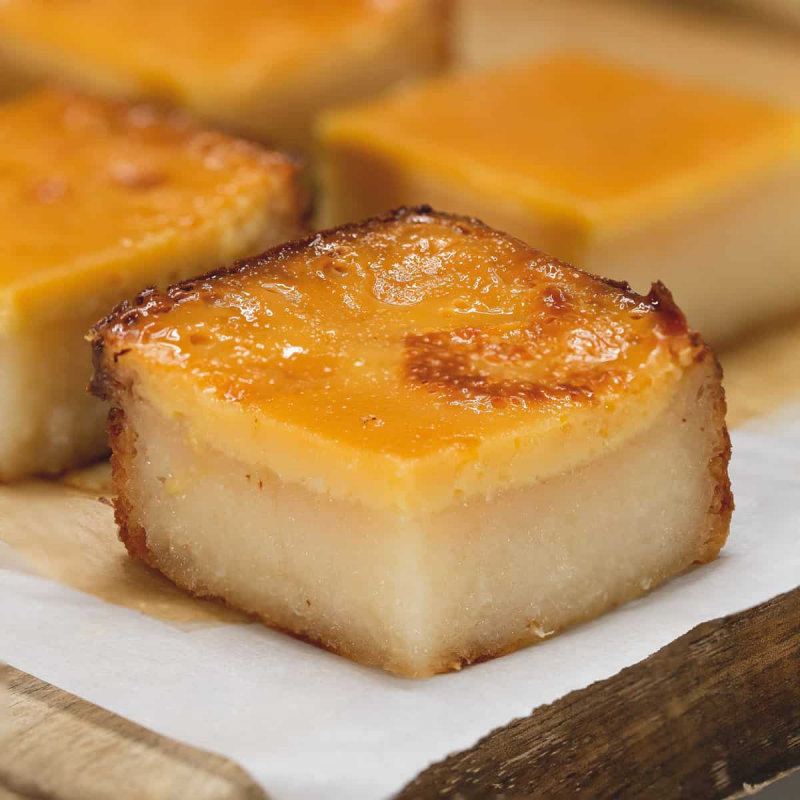
recipesbynora.com 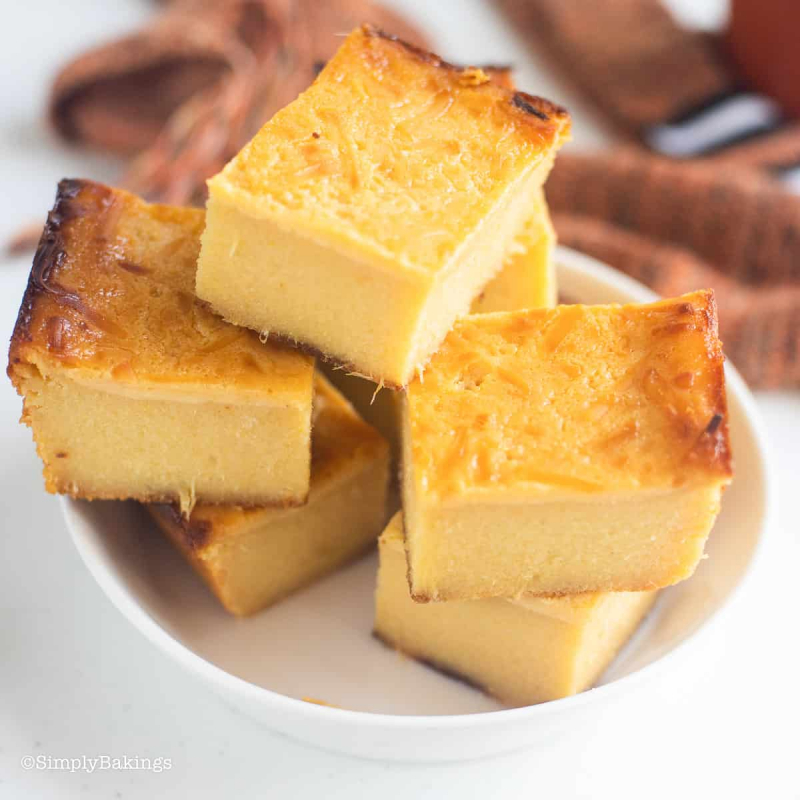
recipesbynora.com -
Sweet Potato Daube- Ladob papat- is a filling, nutritious, and healthy dessert cooked with coconut milk that is simple to make. The soft and sweet potato complements the rich creamy sauce of coconut milk, making it a comfort food for all Seychellois, no matter where they are. Ladob is a Provençal stew made with inexpensive beef stewed in wine, vegetables, garlic, and herbs and traditionally cooked in a daubière, a braising pan. Could it have come from the Malagasy term dauba-dauba?
This way of cooking has a different connotation in Seychelles when it comes to fish and meat versus desserts. The pork or fish ladob is a stew with fried potatoes and, occasionally, little green peas. The fish and pork may have also been fried or pot-roasted in a rich soup. In a dessert context, ladob is a dish baked over medium heat with coconut milk, nutmeg, vanilla, and sugar. When the dish is cooked, the coconut milk thickens and becomes creamy.
Ingredients
- 1 litre fresh coconut milk, 1 kg sweet potato, 1 pod vanilla or 2 tsp vanilla essence, 3 tbsp brown sugar, 200 ml water or milk (optional), 1 pinch salt, 1 pinch freshly grated nutmeg
Instructions
- Wash and scrub sweet potato, then slice lengthways into two and then cut crosswise into even-size chunks of about 3 cm wide.
- Combine the sweet potato chunks in a large pan with the coconut milk (the coconut milk must cover the sweet potato; if it does not, add a little water or milk).
- Slit the vanilla pod in half lengthways and add to the pan along with the salt and nutmeg.
- Sweeten to taste with sugar then bring the mixture to a boil.
- Reduce to a simmer, and cook gently for about 40 minutes, or until the sweet potato is tender enough that they can easily be pierce with the point of a knife. Avoid covering the pot.
- This dish can be served warm or cold.
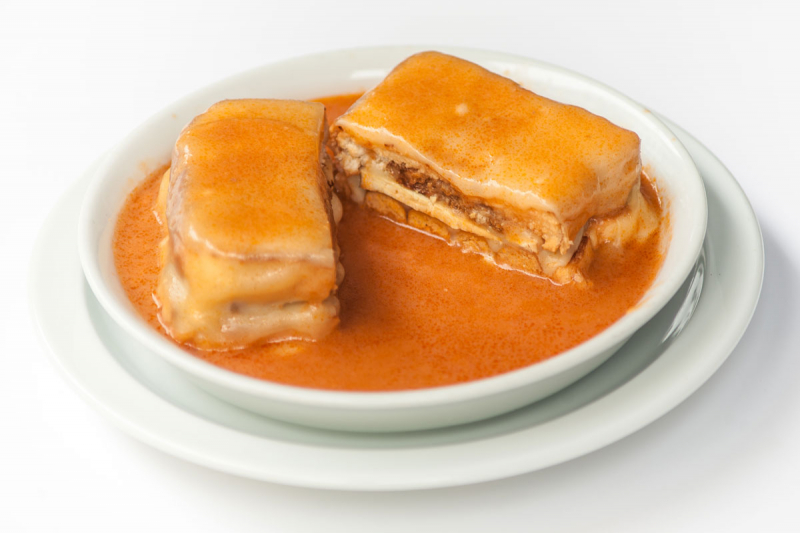
nit.pt 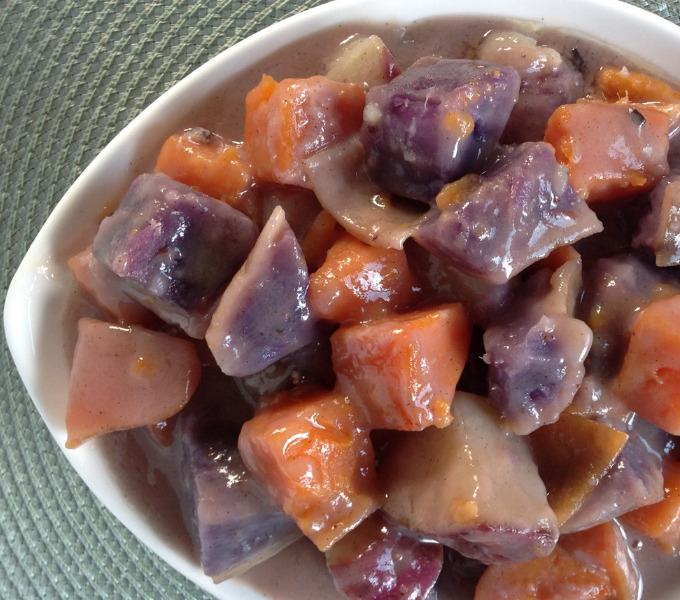
nit.pt -
Sausage Rougail (also known as rougaille or rougail saucisse) ranks 6th in the list of the best foods in Seychelles with recipe. It is a thick tomato stew cooked on low heat with sausages and aromatic spices. This stew has a deep and wonderful flavor that you will adore! Sausage Rougail is a dish popular in Mauritius and Reunion Island (a small island located east of the African continent). Rougail refers to a "mix of condiments and spices" utilized in the traditional Creole cuisine of the region. In Reunion Island, it is known as Rougail, while in Mauritius, it is known as Rougaille.
Rougail is a tomato-based stew spiced with aromatic spices and cooked on low heat for a long time to allow the flavors to blend. The end result is an incredibly tasty stew with hints of various spices that just blend perfectly! The only thing that this sausage rougail has in common with Nigerian Beef Stew is its appearance. Rougail's flavor profile is radically unusual, resembling a combination of Indian, French, and African cuisines. So many different flavors in one meal!
Ingredients- 4 sausages, 2 tomatoes, 2 cups tomato sauce, 2 tbsp olive oil, 1 onion, 2 garlic cloves, 1 tsp ginger crushed, 1 tsp turmeric, 1 tsp paprika, 1 tsp thyme, ½ tsp cumin, ½ tsp salt, ½ tsp cayenne pepper optional, Cilantro or parsley to garnish.
Instructions
- Cut sausage into one-inch chunks.
- Peel and crush garlic and ginger.
- Chop onions and tomatoes.
- Add olive oil to a pot on medium heat and add onions, crushed garlic, and ginger.
- Sauté for a few minutes till fragrant.
- Add the sausage and fry until brown on all sides.Add tomatoes, tomato sauce, and spices (turmeric, paprika, thyme, cumin, salt).
- Add cayenne pepper only if you want it spicy.
- Simmer on low heat for 20 minutes, covered.
- Garnish with parsley or cilantro and serve!
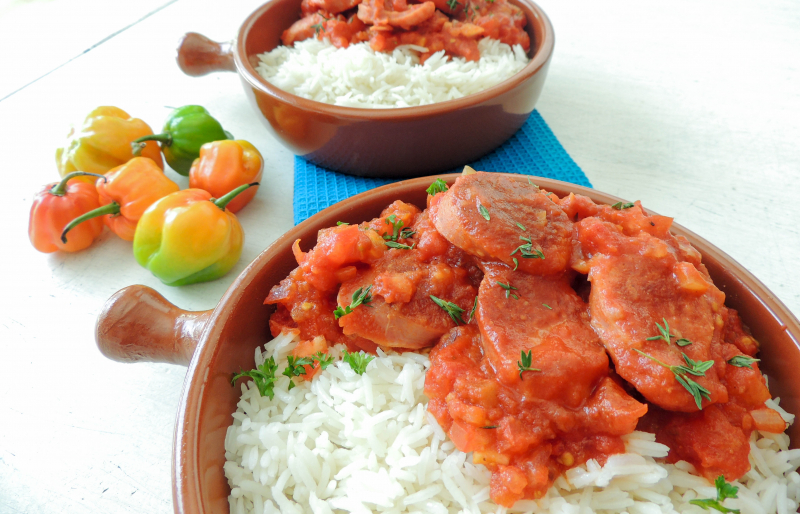
196flavors.com 
196flavors.com -
The bouyon, in all of its variations, is arguably the most popular food among Seychellois, and it is eaten virtually every day. It is always served with simple boiled rice and a variety of chutneys, such as pumpkin or aubergine chutney, as well as a freshly produced spicy chilli sauce. The term "bouillon" stems from a 17th-century French word that means "cooked liquid." While bouillon can be used to make soups and sauces, it is essentially a transparent, seasoned liquid with no solid constituents. Bouillon and broth are interchangeable terms.
The bouyon that has been bred can be either a simple bouyon or a fish bouyon. The basic bouyon can be made with a local spinach variety called as bred. The basic bouyon bred is actually a soup that is sometimes flavored with fried fish oil. The fish bouyon is cooked in the same way as the normal bouyon, but with fried bite-size pieces of fish added. The cordonnier -kordonnyen-or rabbit fish, also known as stinging bream, black spinefoot, or joyful moments, is the most popular fish used in bouyon in Seychelles. Other fish, particularly those of the emperor family, particularly the Red Snapper, are also popular.
Ingredients
- 750 g white firm-flesh fish, 1 young ridge gourd or loffa (Pipangay), 1 medium size onion, sliced, 3 cloves of garlic, crushed, 1 tsp crushed ginger, 6 bilenbi , washed and sliced, 2 ripe tomatoes, chopped, 1 litre water , 2 sprigs parsley,, roughly chopped, 1 sprig of thyme, salt and cracked black pepper
Instructions
- Clean the fish, cut into bite size pieces and season.
- Wash the ridged gourd and cut off the ends. Use a sharp small knife and peel off all the ribbed skin. Wash and cut into cubes of about 4 cm.
- Heat oil in a large pot and sweat onion and then add ginger,and garlic , stir for a minute and add tomato, parsley and thyme and cook for about three minutes.
- Add the fish and bilenbi, gently stir and let it steam for about three minutes by placing a lid on the pot.
- Add about 1 litre of water, cover pot with lid and cook on moist heat for about 20 minutes.
- Season and serve
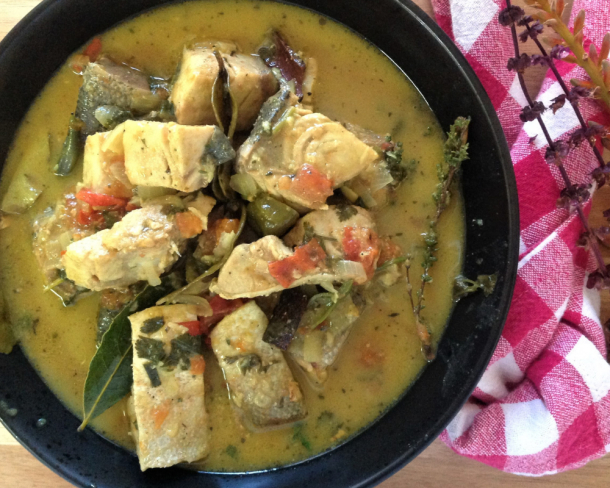
youtube.com -
Kari Safran Latet Pwason's delectable Fish Head Curried in Turmeric mixes the varied textures of the fish head with the medicinal benefits of turmeric to create a dish that is wholesome and nutritious. Traditionally, the Seychellois do not fillet their fish, which is always cooked on the bone. Except for the shark head, which is only thrown away once the skin has been removed and dried, the head is never thrown away. Small fish heads are normally cooked with the remainder of the fish, as opposed to huge fish heads, which are sometimes served as a meal, as is the case in this recipe.
The Seychellois don't throw away their fish. Eating the head of a fish is still quite normal for them. In fact, they consider it to be the tastiest part of the fish since it provides a variety of sensory pleasures, ranging from gelatinous parts to delicate cheek meat and somewhat chewy eyeballs! Many people avoid eating fish heads because they prefer clean, boneless fillets. The fish's head contains a lot of delicious meat and has more flavor than any other portion of the fish; flavor like you wouldn't believe!
Ingredients
- 1 medium to large fish head- red snapper, any snapper or Trevally, 1 large onion, sliced, 1½ tsp turmeric powder, 1 medium size young luffa (Pipangay) (note 1), 4 green bilimbi, washed or 1 tbsp lemon juice, 1 ripe tomato- chopped, 2 tsp crushed garlic, 2 tsp crushed ginger, 2 tbsp vegetable oil, 200 ml water, 2 twigs thyme, 2 twigs parsley- chopped, salt and cracked pepper
Instructions
- Clean and Prepare Fish Head
- Take your time and scrape off the scales by means of a sharp knife or a fish scaler. The scales are almost everywhere , including the top of the head, the cheeks, the collars, the gill covers.
- Use the same knife to remove the gills.
- Rinse and wash away as much blood away from the tissue as you can.
- You will require a solid work bench to perform this next step.
- Separate the two collars from the rest of the head and thoroughly rinse them and pat dry.
- Use a cleaver or a heavy knife, divide the remainder of the head into manageable portions. Divide the head into halves along the lateral axis, and then cut each half into smaller parts.
- Rinse under running water, drain and keep
- Prepare the luffa and bilimbi
- Wash the ridge gourd and cut off the ends. Use a sharp small knife and peel off all the ribbed skin. Wash and cut into cubes of about 4cm.
- Wash bilimbi and slice into rondels .If you cannot access fresh bilimbi you can buy frozen ones from Asian shops. If you cannot access bilimbi at all, half a tablespoon of lemon juice is a good alternative.
- Finishing the Curry
- Heat oil in a medium size pot and sweat onion, then add garlic and ginger.
- Add the chopped tomato, turmeric powder, mix well and let fry for a few seconds and then add the water. Do not fry off your turmeric for too long as it will turn bitter.
- Gently add the fish head, cubed luffa, chopped parsley and thyme.
- Once the pot starts to boil, turn heat to simmer and cook for about 25 minutes. Avoid stirring the curry but give your pot a quick shake every now and then.
- This Fish Head Curried in Turmeric- Kari Safran Latet Pwason- is ideally served with plain boiled rice and green pawpaw chutney and accompanied with a vegetable asar. The rice will fully absorb the juice and collagen released from the bones, and the turmeric brightens up the mildly sweet flesh without overpowering the delicate flavours.
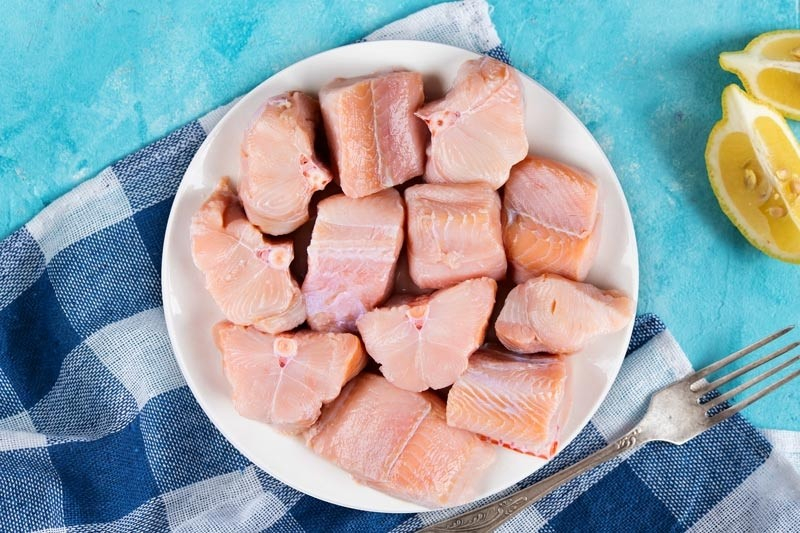
freshtohome.com 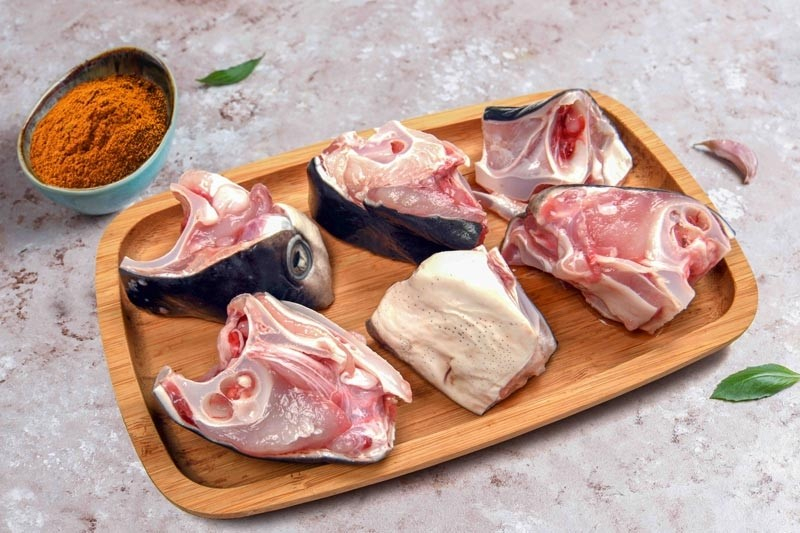
freshtohome.com -
Nouga koko ek bannann, or coconut nougat with banana, is a soft coconut candy made with freshly grated mature coconut and flavored with vanilla and nutmeg. It's deliciously sweet and nutty, and it was a childhood favorite of theirs. Nouga is derived from the French word 'nougat,' which refers to a type of confection made with sugar or honey, roasted nuts, beaten egg whites, and occasionally chopped candied fruit. The texture of nougat is chewy. The coconut nougat with banana is quite similar to the traditional definition, except that it has no egg white and is created using coconuts rather than other nuts.
If you live outside of the tropics, it is uncommon to find unhusked coconut; nevertheless, husked coconuts are now available at most Asian markets and big grocery stores. When purchasing a coconut, you should pay careful attention to the following: A coconut should be hefty in the palm of your hand. Shake the nut to hear the sound of the coconut water swishing. It is old if there is little or no water in the nut. Check for cracks in the nut. If the coconut is moist or damp, the shell is most likely cracked and the coconut water is leaking.
Ingredients
- 250 g fresh finely grated coconut, 250 g brown sugar, 4 ripe sour banana – bannann mil ( or 2 ripe Cavendish Banana), 1 vanilla bean pod ( or 1 tsp vanilla essence), ¼ tsp grated nutmeg
Instructions
- Slit the vanilla pod and scrape the seeds, keep
- Meanwhile peel and mash the bananas in a bowl. Keep
- Place the sugar into a large pot set over medium heat. Leave the sugar alone until you see it begin to melt.
- Using a heavy duty wooden spoon or heat-safe rubber spatula, scrape the sugar from the edge of the pan to the middle. You’re doing this for a couple of reasons — first, you want to keep the melted sugar from browning too fast and burning. Second, you’re moving the unmelted sugar to the hotter spots on the pan to begin melting.
- You may experience some clumping of unmelted and melted sugar. Don’t worry, keep cooking the sugar over low heat and those clumps will melt right out.
- Once the sugar begins to caramelize, add bananas and mix
- Add coconut and mix well. The sugar will solidify after adding the banana and coconut, but don’t worry, the sugar will re-melt.
- Keep cooking the mixture over medium heat, stirring occasionally until the sugar re-melts. Cook on medium heat for about 15 minutes, stirring occasionally
- Add the scraped vanilla seeds and grated nutmeg and stir well
- Remove from heat and transfer the nougat onto a plate. Smoothen the surface. Do not press on the nougat. This is a soft nougat and will not harden upon cooling.
- Allow to cool and serve.
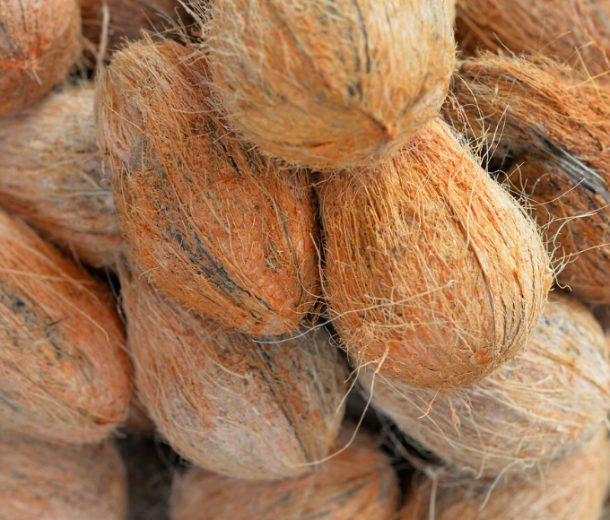
sanjeevkapoor.com 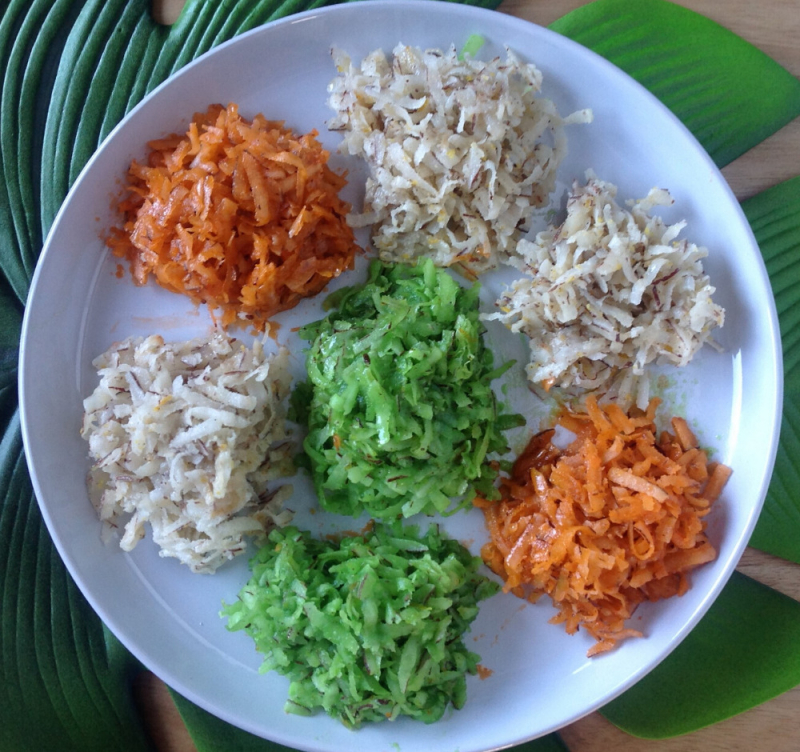
thecreolemeltingpot.com -
This recipe calls for flour, rice, and sugar. Because it is deep fried, it is rather unhealthy, yet it is a true sweet treat. They have a slightly meaty chewy texture because to the coarsely crushed rice, and a crystallized sugary outside covering. The Seychellois moutay is fatter and fleshier than the Indian variant, and it has fewer coils. It also does not contain any yoghurt.
Instead of a piping bag, a funnel or lantonwanr was traditionally employed. The lantonwanr was a homemade funnel fashioned of half a coconut shell and a small hollow pipe, usually bamboo, put into the soft eye of the shell. The cook would place one finger in the hole at the end of the pipe, scoop the batter into the shell, and then release the finger, allowing the batter to tumble in continuous circles into the heated oil. When the desired number of coils is reached, the finger blocks the pipe to prevent the batter from continuing descending into the oil. The funnel is transferred to a different portion of the hot oil, and the procedure begins again for the next jalebie.
Ingredients
- 1 cup rice or rice flour, 2 cups plain flour, 1 1/2 cups warm water, 1 tablespoon instant yeast, Oil for deep frying, 2 cups water, 1 cup sugar.
Instructions
- Place the sugar and water in a pan and stir over medium heat until the sugar dissolves completely.
- Cook the syrup for a few minutes on medium heat while continuously stirring.
- Allow it to cool completely.Wash the rice, place in a sieve, and allow to drain until dry.
- Blend the rice until fine.Add the yeast to the warm water and allow to stand for few minutes.
- Place, the blended rice and flour in a large bowl, pour the water and yeast mixture, and mix to get a thick batter. (batter should be slightly running )
- Heat some oil in a deep pan or pot.
- Place the batter in a piping bag. (you can also use a funnel)
- Pipe the batter into the hot oil making a swirling shape.
- Allow to float and turn over until golden brown.

facebook.com 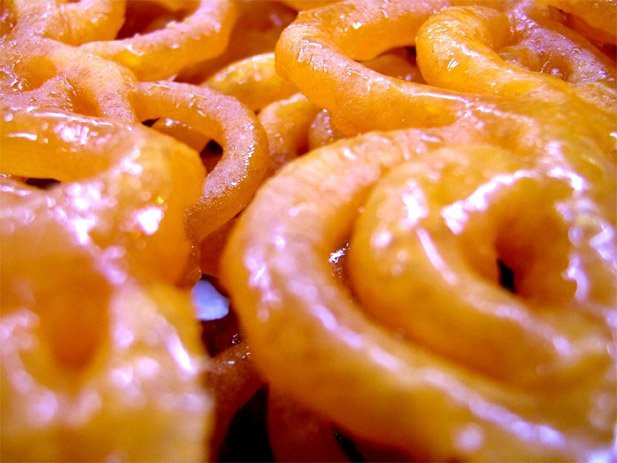
facebook.com












